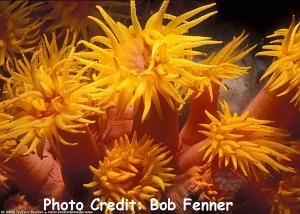
By Bob Goemans


Likely Reef Tank Suitable
Likely Fish-Only Tank Suitable
There's only one reef building genus in this family, and that is Turbinaria. They are fairly easy to maintain and exhibit little aggression to neighboring corals. The most common form is bowl or goblet-shaped varieties, however, some form scroll or flat plate-like forms and occasionally encrust live rock. Environmental factors such as light and water currents are the two conditions that most impact its adapting/forms. Bowl shaped specimens usually come from deeper water where the coral is attempting to gather as much light as possible with its bowl-like shape. Scroll-shaped specimens usually come from shallow water and may be more colorful, such as the yellow T. mesenterina and T. reniformis species, which have polyps usually less than 1 mm high. When irritated, these corals can dispense copious amounts of clear mucus. If this mucus touches other corals it can damage them as it is presumed to contain nematocysts or a toxin used as a defense mechanism.
Most others in this family are cave dwelling stony corals and difficult to maintain long term without hand feeding once every few days. Their tentacles are usually extended only during the night when it attempts to feed on zooplankton, but can be coaxed to extend when meaty foods enter the aquarium.